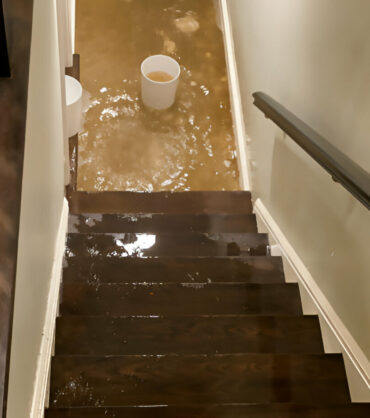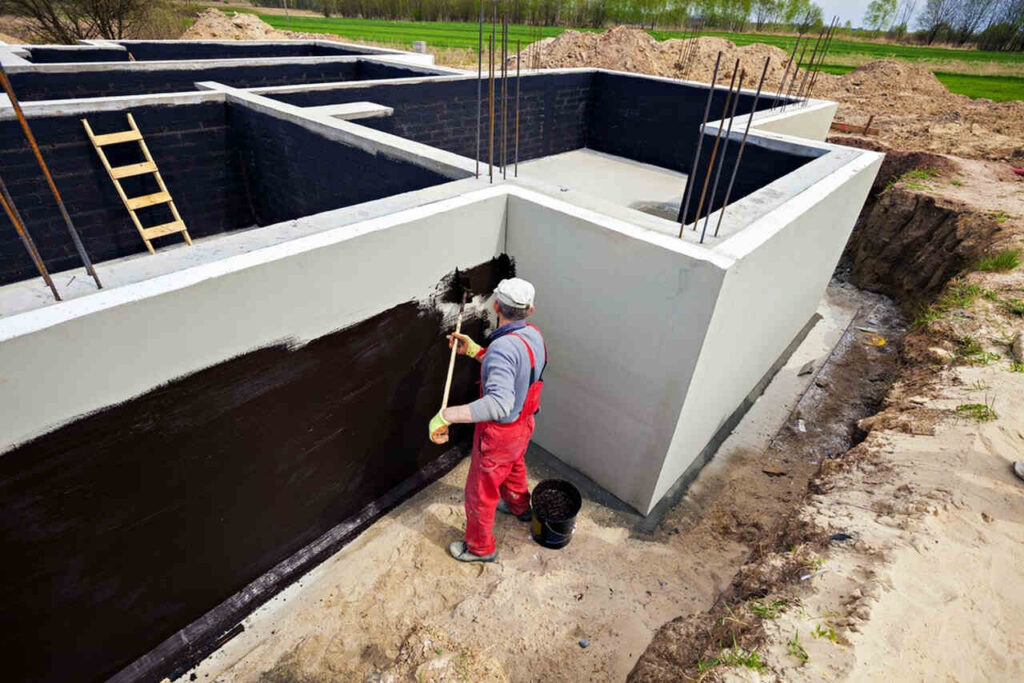
When it comes to protecting your home’s structural integrity, foundation waterproofing is not optional—it’s essential. Without a strong barrier against water intrusion, you risk mold, structural damage, and costly repairs. Whether you’re searching for foundation waterproofing near me or simply curious about the best waterproof foundation options, this guide covers everything you need to know.
Why Foundation Waterproofing Matters
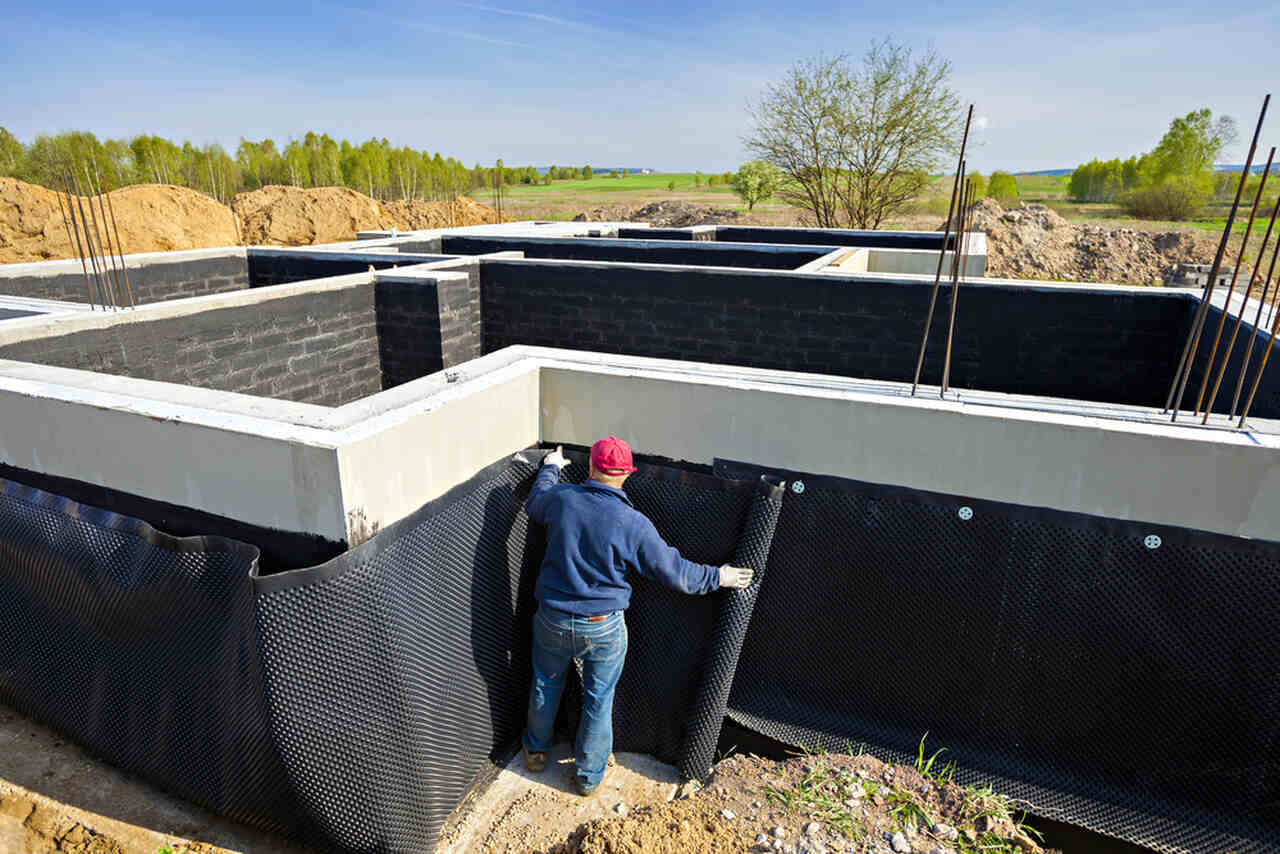
Credit: Baumerk
Foundation waterproofing is one of the most critical components in maintaining the safety, stability, and value of your home. It involves applying water-resistant materials—such as waterproof membranes, vapor barriers, and drainage systems—to the exterior and/or interior of your foundation walls. The primary goal is to prevent water intrusion that can weaken your structure over time.
Many homeowners mistakenly assume that a concrete foundation is impermeable. However, without the right waterproofing solutions, concrete can absorb moisture, leading to severe long-term issues. Here’s why it matters:
- Foundation Cracks: When water enters the pores of concrete and then freezes, it expands and causes cracks to form. Over time, these cracks can grow and compromise the structural integrity of your home.
- Standing Water: Accumulated water near or inside the basement not only damages flooring and walls but can also create an ideal environment for pests and bacteria.
- Mold and Mildew Growth: Moisture buildup can lead to hazardous mold spores that impact indoor air quality and pose serious health risks for your family.
- Structural Shifting and Settling: Soil erosion caused by improper drainage or long-term saturation can result in foundation settlement, uneven floors, and even door or window misalignment.
A properly installed foundation waterproofing system acts as a shield, protecting your investment from costly damage. To learn more about how we safeguard homes across the DMV area, visit our Basement Waterproofing service page.
Signs Your Foundation Needs Waterproofing
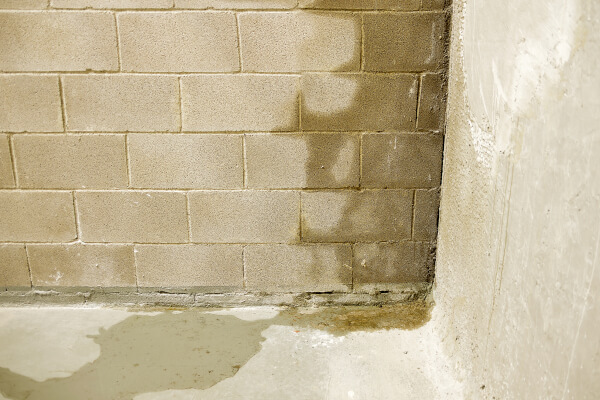
Credit: RF Landscape
Early detection of water issues can save homeowners thousands in repairs. If you’re unsure whether your foundation needs waterproofing, there are several clear warning signs to look out for. These indicators suggest that your foundation may already be vulnerable to moisture damage:
- Visible Cracks in Foundation or Basement Walls: Horizontal, vertical, or stair-step cracks in concrete or cinder block walls are often a red flag for water-related structural stress.
- Efflorescence: A white, chalky residue on the interior walls is a sign that water is evaporating through the concrete and leaving behind mineral deposits. It’s an early sign of moisture seepage.
- Standing Water After Rain: Pools of water near the base of your home or persistent damp spots in your basement signal poor drainage and a failing waterproofing system.
- Musty Odors or Damp Smell: A strong, persistent musty smell usually indicates the presence of mold, even if you can’t see it. Mold often grows behind walls or under flooring where moisture accumulates.
- Deterioration of Interior Walls or Flooring: Peeling paint, warped floors, or bubbling drywall are all signs of water infiltration. Left untreated, this damage will worsen over time.
If you notice any of these symptoms, it’s crucial to act fast. Delaying foundation waterproofing services can lead to more extensive structural damage, higher repair costs, and health risks. For immediate help, reach out to DMV Waterproofing Pros—your trusted local experts in foundation repair and waterproofing.
Interior vs. Exterior Foundation Waterproofing
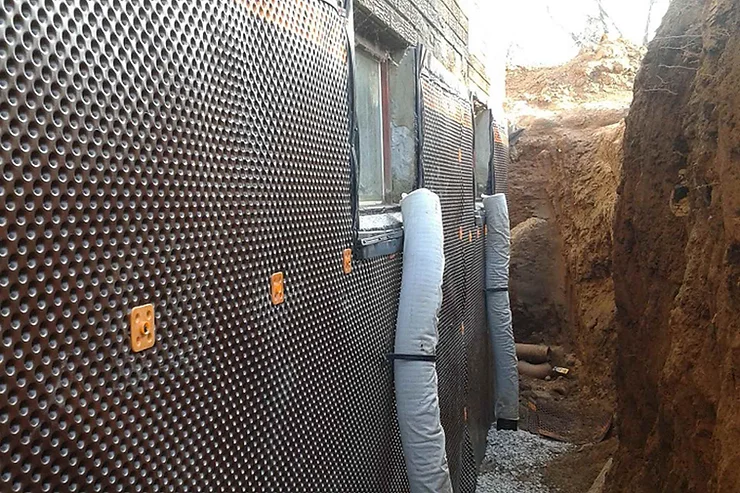
Credit: Basement Waterproofing
When considering foundation waterproofing, homeowners are often faced with two primary options: interior and exterior solutions. Each method has its benefits, depending on the extent of water intrusion, structural vulnerabilities, and budget.
Interior Waterproofing: A Cost-Effective Solution for Early Moisture Control
Interior waterproofing addresses water that has already entered the foundation or is seeping through the walls and floor. While it does not stop water from reaching the foundation, it effectively channels it away before it causes significant damage. It is generally less disruptive and more affordable than exterior systems, making it ideal for:
- Homes in low-risk flood zones
- Budget-conscious waterproofing
- Addressing humidity and condensation
Common Interior Waterproofing Techniques:
- Sump Pump Installation: A sump pump system collects and expels water from the basement, preventing flooding and standing water during heavy rainfalls or snowmelt.
- Interior Drainage Systems (French Drains): A trench filled with perforated pipes and gravel is installed around the basement’s interior perimeter, collecting and redirecting groundwater into the sump pit.
- Vapor Barriers Applied to Foundation Walls: These barriers help prevent water vapor from passing through porous basement walls, reducing humidity and the risk of mold growth.
To explore how these methods work together to create a dry, healthy basement, visit our Basement Drainage and Waterproofing Guide.
Exterior Waterproofing: The Ultimate Defense Against Water Intrusion
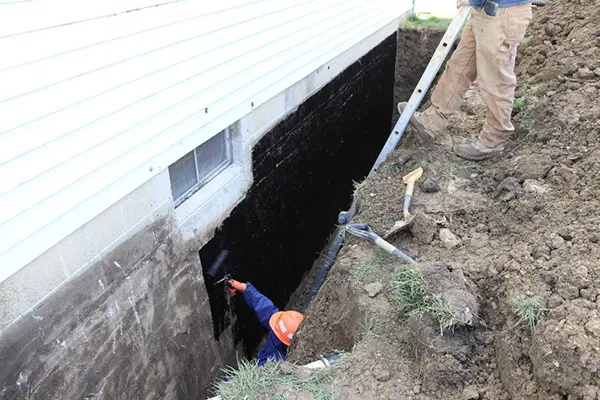
Credit: Baker’s Waterproofing
Exterior foundation waterproofing is widely regarded as the most comprehensive and effective approach. It involves stopping water before it makes contact with the home’s foundation walls, which significantly reduces the chance of damage or seepage.
This method is ideal for:
- Homes in high water table or flood-prone areas
- New constructions or major renovations
- Long-term waterproofing with minimal maintenance
The Exterior Waterproofing Process Includes:
- Excavating the Foundation Perimeter: Soil is removed to expose the exterior foundation walls, usually down to the footing level.
- Repairing Foundation Cracks: Any visible structural cracks are sealed to reinforce the wall and stop future water penetration.
- Applying a Foundation Waterproofing Membrane: A liquid-applied membrane or sheet membrane forms a seamless barrier that blocks moisture from penetrating the concrete.
- Installing Weeping Tiles and Gravel Drainage: A system of weeping tiles (perforated drainage pipes) at the footing level helps redirect groundwater away from the structure.
- Adding a Protective Layer (e.g., Dimple Board): This protective barrier shields the membrane and facilitates water movement into the drainage system.
Get a closer look at this method and why it’s so effective in our detailed Exterior Waterproofing Guide.
Best Foundation Waterproofing Materials
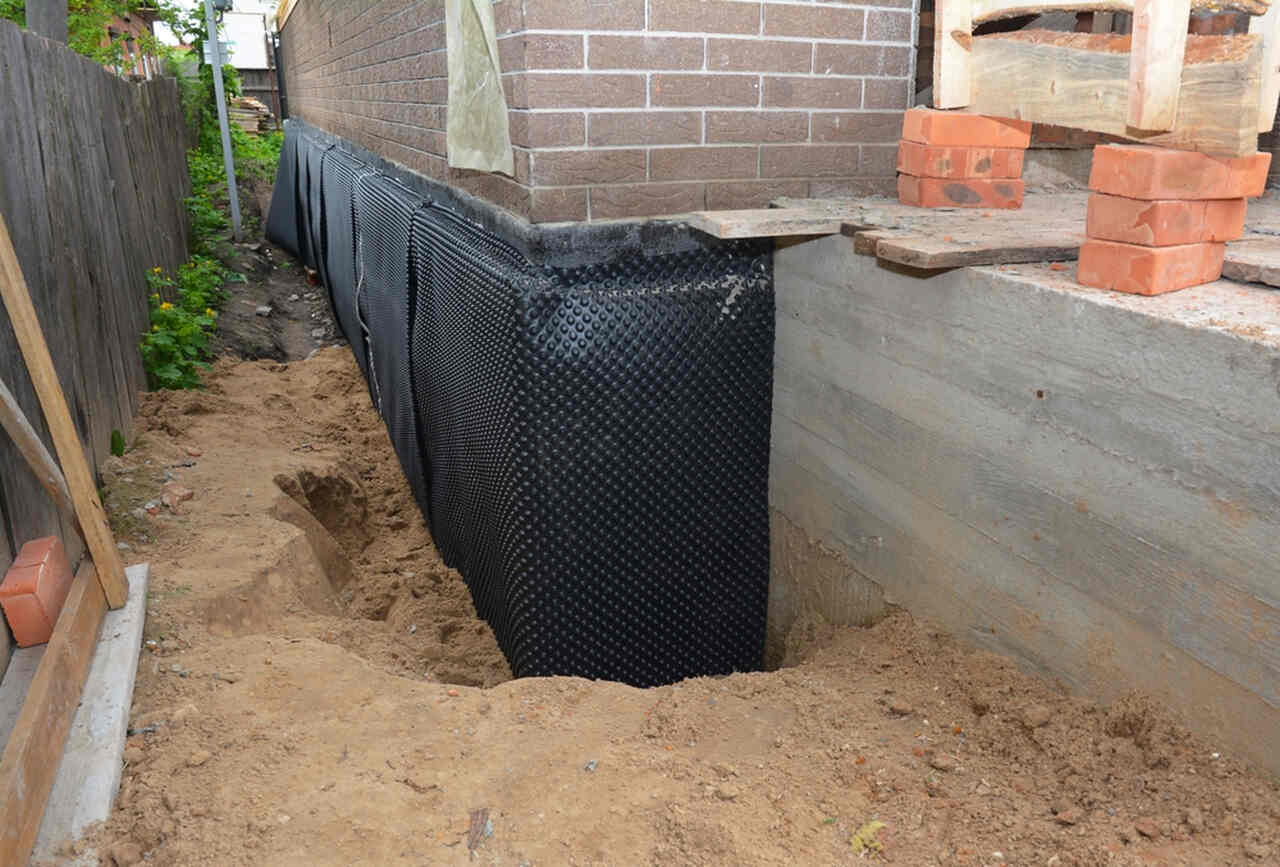
Credit: Baurmerk
When it comes to selecting the best materials for foundation waterproofing, the right choice depends on your home’s structure, water exposure level, and budget. Let’s examine the most trusted solutions in the industry.
Waterproof Membranes
A foundation waterproofing membrane is a core component of exterior waterproofing systems. It forms a continuous shield that prevents water from penetrating foundation walls. The top options include:
- Liquid-Applied Membranes: These create a seamless, rubber-like coating over the wall. They’re easy to apply with a brush or sprayer and adapt well to complex surfaces. Their elasticity allows them to bridge minor cracks, preventing future leaks.
- Sheet Membranes: These pre-formed sheets—often made of bitumen or synthetic rubber—are rolled onto the foundation walls. They offer durability and high puncture resistance, especially in backfilled areas.
- HDPE Membranes: High-density polyethylene (HDPE) membranes are strong, chemical-resistant, and widely used for below-grade waterproofing. They offer excellent protection against soil moisture and hydrostatic pressure.
Manufacturers like Resisto and Sika are known for producing high-quality membrane products trusted by professionals.
Vapor Barriers
A vapor barrier is essential in both interior waterproofing and crawl space encapsulation. These barriers are usually made from polyethylene and prevent water vapor from migrating into living spaces, reducing the risk of:
- Condensation
- Mold growth
- Poor indoor air quality
In crawl spaces, vapor barriers are installed along the ground and foundation walls to create a sealed, dry environment. Discover the top products in our guide to Top U.S. Crawl Space Vapor Barrier Companies.
Drainage Systems
Effective drainage is critical to the success of any waterproofing system. Whether installed inside or outside the foundation, these systems help redirect water before it becomes a problem.
Common Types of Drainage Systems:
- Weeping Tiles: These underground pipes are laid around the foundation to collect and drain away water. They are vital in both interior and exterior systems.
- French Drains: Installed inside the basement perimeter, these drains collect water at the base of the foundation and funnel it toward a sump pump.
- Perforated Pipes: These pipes have small holes that allow water to enter and be carried away, preventing it from pooling near the foundation.
To elevate your protection, consider one of DMV Waterproofing’s exclusive systems:
- EcoDrain: A sustainable drainage solution using recycled materials, perfect for eco-conscious homeowners.
- HydroGuard: Designed for high-capacity water flow, it’s ideal for large properties and heavy rainfall.
- ProDrain: Our advanced solution that combines smart engineering and durable materials for long-term performance.
Cost of Foundation Waterproofing
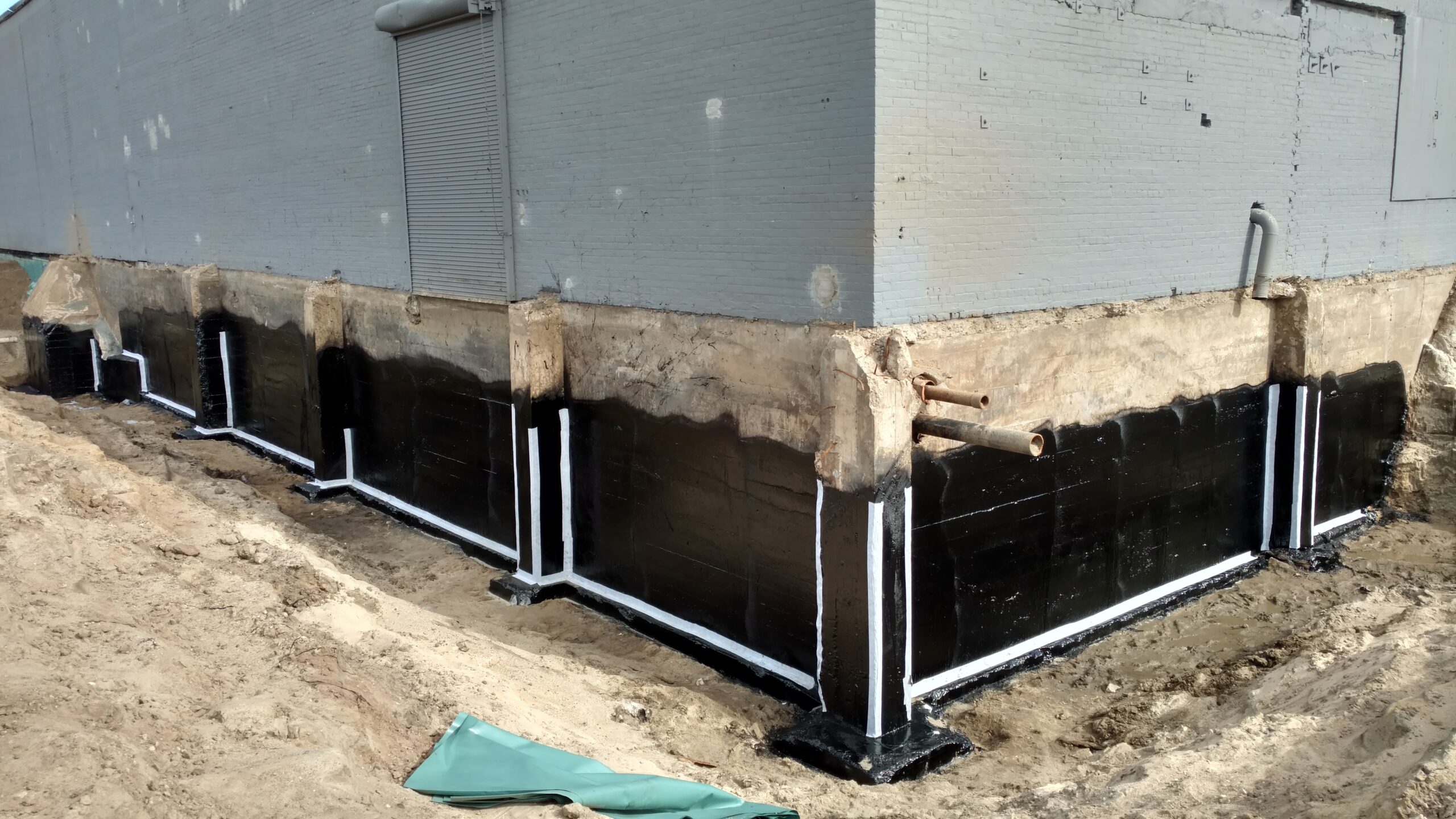
Credit: EPRO
Foundation Waterproofing Cost Breakdown
Understanding the cost to waterproof a foundation is a crucial step before starting any project. The total price can vary significantly depending on the scope of the job, your geographic location, and the techniques involved. Here are the key factors that impact the final foundation waterproofing cost:
- Type of Waterproofing System:
Interior waterproofing methods (such as sump pumps, vapor barriers, or French drains) generally cost less than exterior systems, which involve excavation and more extensive labor. - Basement Size and Layout:
Costs are usually calculated per square foot or linear foot, so larger or uniquely shaped basements will require more materials and time to complete. - Materials Used:
Whether you’re using liquid-applied coatings, sheet membranes, or high-end HDPE membranes, the price varies by product type and quality. - Labor and Excavation Requirements:
For exterior foundation waterproofing, excavation can be the most labor-intensive and costly aspect, especially if access to the foundation walls is limited.
Average Foundation Waterproofing Costs
To give you a realistic estimate of what to expect, here’s a general pricing guide:
- Interior Waterproofing Systems:
Typically range from $3 to $10 per square foot
Ideal for homes experiencing minor seepage, condensation, or early-stage water damage. - Exterior Waterproofing Systems:
Typically range from $7 to $15 per square foot
Includes excavation, crack repair, waterproof membranes, weeping tiles, and backfill. - Total Project Cost:
Depending on the method and square footage, total expenses typically fall between $2,000 and $15,000. Major projects involving deep foundations, significant excavation, or premium materials may exceed this range.
To get a more accurate estimate, check out this detailed resource on Basement Waterproofing Costs.
Additionally, if you’re located in the DMV area, our team provides free estimates based on your foundation’s exact needs. Visit our Contact Page to schedule your evaluation.
Choosing the Right Foundation Waterproofing Services
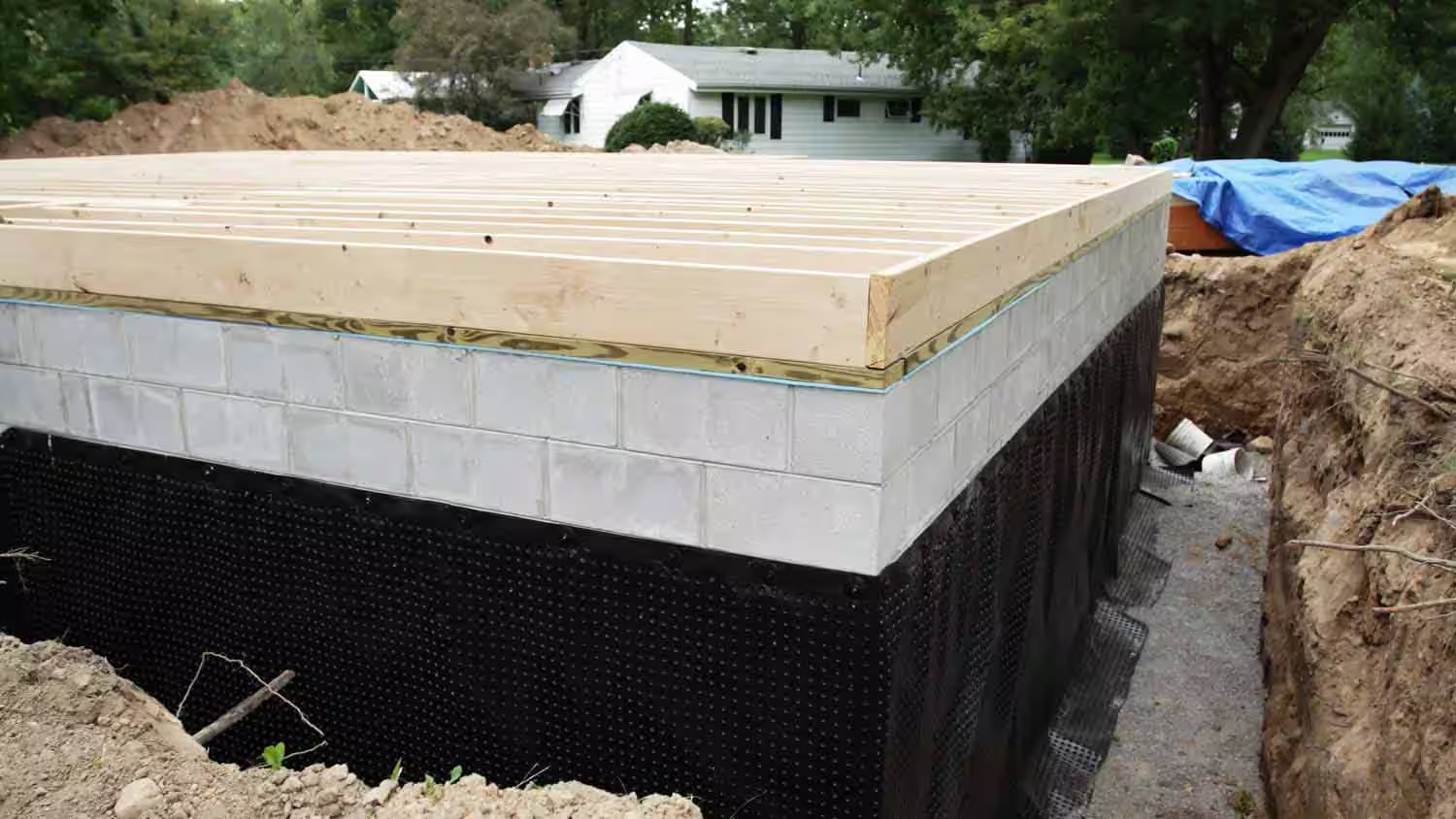
Credit: Angie’s List
When searching for foundation waterproofing near me, it’s essential to choose a contractor who offers more than just a one-size-fits-all solution. A dependable waterproofing company should provide a customized plan tailored to your home’s condition and environmental challenges.
What to Look for in a Waterproofing Contractor
Here are the top criteria to ensure you select the best provider for your foundation waterproofing services:
- Licensed and Insured Professionals
Always confirm that your contractor is licensed in your state and carries the appropriate liability and workers’ compensation insurance. - Comprehensive Inspection and Transparent Quote
A thorough inspection should be performed before any quote is provided. The contractor should explain what’s needed and why, breaking down costs clearly. - Proven Track Record and Customer Satisfaction
Look for companies with strong testimonials, reviews, and references. Companies like DMV Waterproofing that proudly showcase real client experiences—such as those on our Happy Customers page—are more likely to deliver top-quality service. - Warranty and Aftercare
A trustworthy waterproofing provider offers lifetime warranties or long-term guarantees that are transferable to future homeowners. This adds value to your property and peace of mind for years to come. - Specialization in Foundation and Basement Waterproofing
Not all contractors are waterproofing experts. Choose a provider that specializes in basement waterproofing, foundation repair, and moisture control. These specialists have the equipment, materials, and knowledge to tackle even the most complex issues.
Why Homeowners in Maryland, Virginia, and Washington DC Choose DMV Waterproofing
At DMV Waterproofing, our team offers reliable, proven, and budget-conscious solutions for both residential and commercial foundations. We don’t just seal up a basement—we create long-term protection strategies that address the root causes of water damage.
With local service areas throughout:
…and key cities like Rockville, McLean, Bethesda, Georgetown, and Alexandria, our technicians are only a call away.
Visit our Service Areas page to confirm availability in your region and get started with a no-obligation inspection today.
The Importance of Timely Foundation Waterproofing
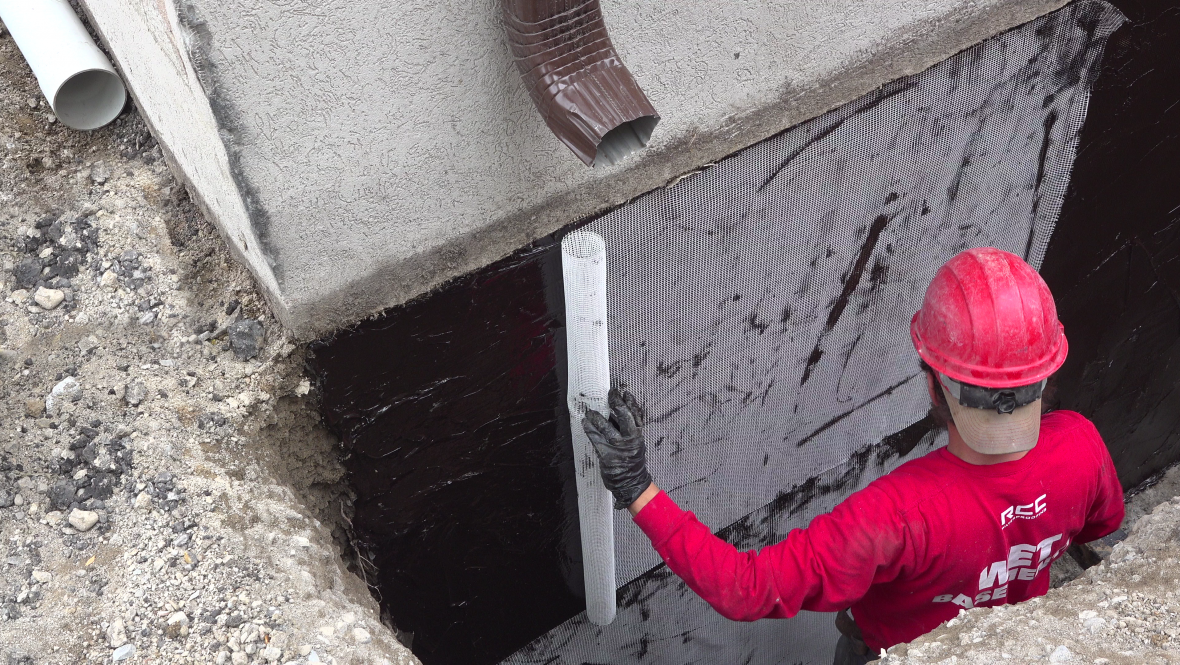
Credit: RCC Waterproofing
Delaying foundation waterproofing—especially when early warning signs are present—can result in far more serious problems down the line. Many homeowners underestimate the speed at which water damage can escalate, particularly in regions prone to heavy rainfall or fluctuating temperatures.
Here are the key risks of procrastination:
- Higher Foundation Repair Costs: Water weakens concrete and masonry over time, which can lead to foundation cracks, shifting, or even structural collapse. The cost to waterproof a basement is significantly lower than the cost to repair a damaged foundation.
- Mold Infestations Requiring Mold Remediation: Moisture buildup fosters the growth of harmful mold and mildew, especially in hidden areas like wall cavities or beneath floors. Left untreated, this can result in chronic health issues and require costly professional mold remediation.
- Irreversible Damage to Walls and Flooring: Persistent water intrusion can warp wood, corrode metal, and cause drywall to crumble. Moisture trapped behind materials often leads to expensive repairs or full replacement of interior finishes.
- A Drop in Property Value: Homes with visible water damage, musty odors, or foundation issues are much harder to sell. Even if you’re not planning to move, these problems can impact appraisals and insurance claims.
Knowing when to act is crucial. Learn more in our guide: How Long Can You Delay Basement Wall Crack Repair?
Best Foundation Waterproofing Techniques
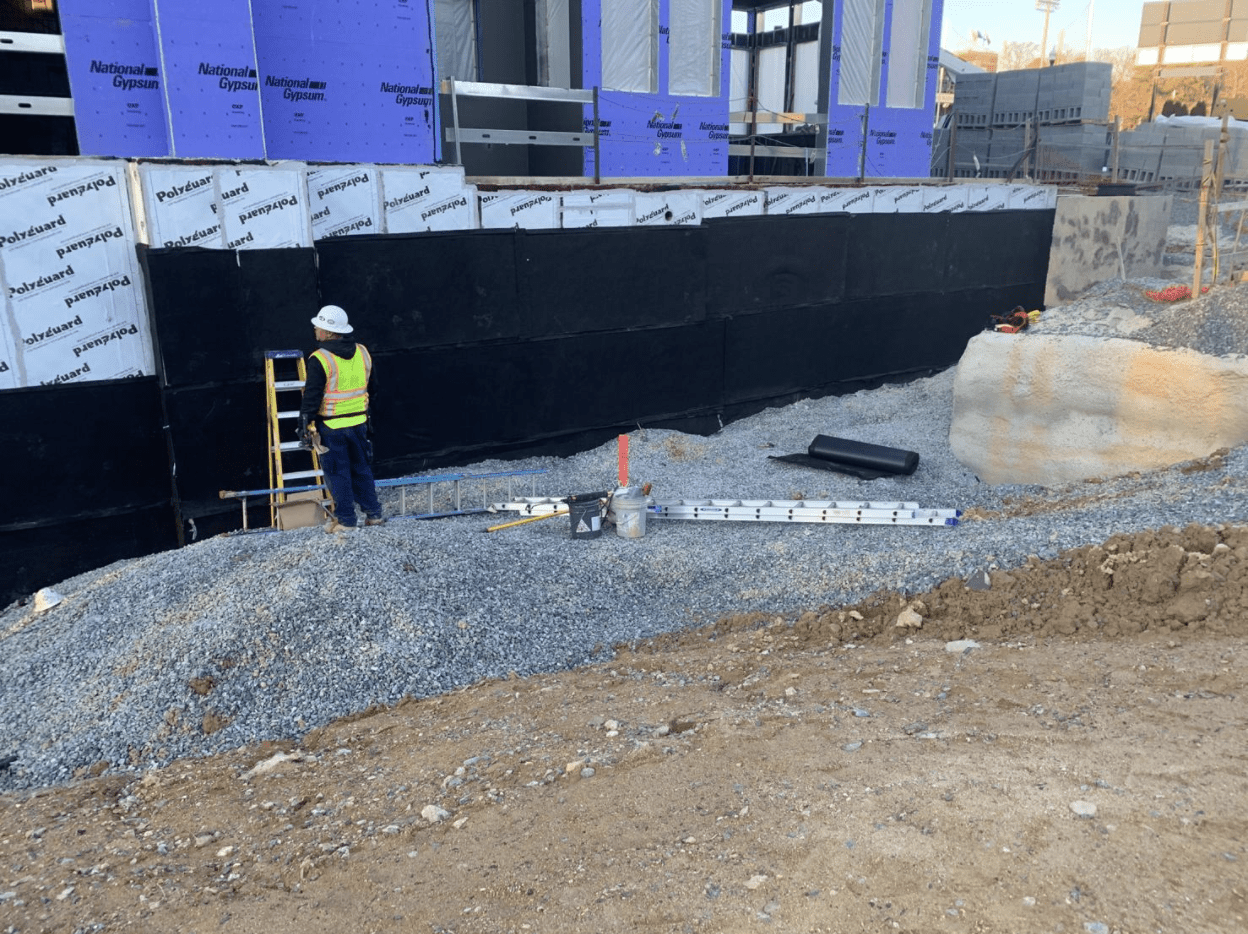
Credit: Polyguard Producs
There’s no one-size-fits-all solution when it comes to waterproofing a basement or foundation. The best technique depends on the structure, soil conditions, water pressure, and budget. Below are the most widely used and effective methods used in both residential and commercial applications:
Liquid Rubber and Asphalt Coatings
These coatings are applied directly to foundation walls and create a flexible, matte finish that adheres tightly to the concrete. They’re particularly effective in:
- Low-pressure water areas
- Interior applications
- As a base coat before applying sheet membranes
Liquid rubber sealants expand and contract with the wall, preventing cracks from reopening. They’re also easy to apply and relatively inexpensive, making them ideal for DIY repairs or supplementary protection.
Sheet Membranes
Sheet-applied waterproofing membranes are often made from bituminous material or high-strength HDPE. These are rolled or adhered to the exterior of the foundation wall to create a consistent, watertight barrier.
- Excellent for exterior foundation waterproofing
- High puncture and tear resistance
- Commonly used in commercial or multi-family projects
Because they offer both physical and chemical resistance, they’re a top choice for areas with high hydrostatic pressure or soil saturation.
Spray-Applied Fluid Membranes
This technique involves spraying a fluid membrane directly onto foundation surfaces, which then cures to form a seamless waterproof layer. It’s ideal for:
- Irregular surfaces or architectural details
- Fast application and turnaround times
- Homes needing rapid foundation waterproofing
These membranes are featured in WaterproofMag’s guide on fluid-applied membranes, and praised for their durability and versatility in both new and existing foundations.
For a full look at how we implement these techniques, explore our Basement Waterproofing Solutions across the DMV area.
Mold Risks and Waterproofing Prevention
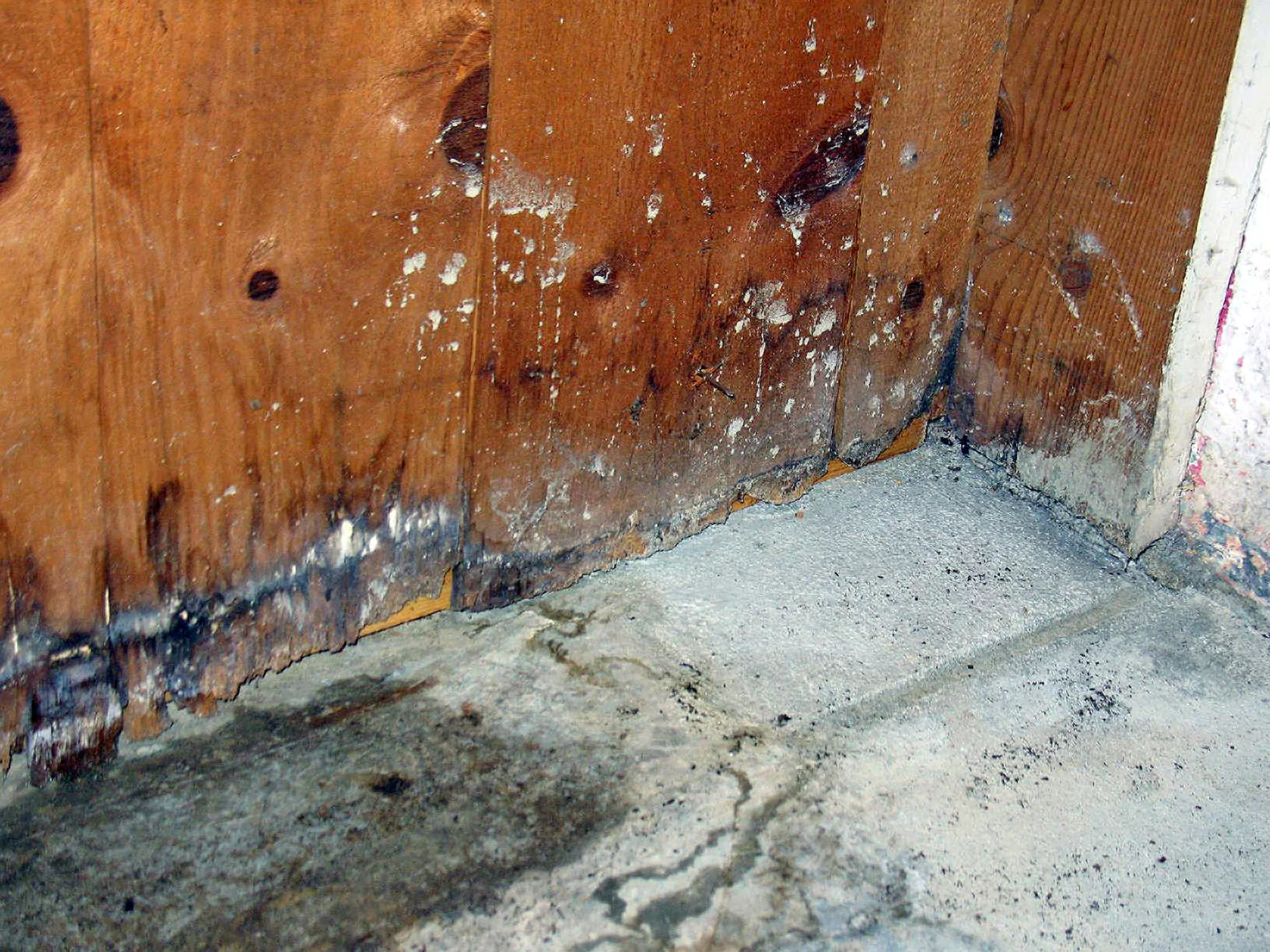
Credit: Sedona Waterproofing Solutions
One of the most overlooked dangers of a damp basement is mold growth. Once mold takes hold, it can spread rapidly behind drywall, beneath carpets, and within insulation. Beyond structural damage, mold poses serious health risks such as:
- Respiratory issues
- Allergic reactions
- Skin irritation
- Worsening of asthma
Even small amounts of trapped moisture—often from water vapor or condensation—can lead to persistent infestations. That’s why prevention through foundation waterproofing is far more cost-effective than remediation.
At DMV Waterproofing, we don’t just stop water—we eliminate the conditions mold needs to thrive. Our Mold Removal Services target both visible and hidden mold, ensuring your home remains safe and breathable.
To reduce your risk:
- Seal all foundation cracks
- Install a vapor barrier or waterproof membrane
- Keep humidity levels below 60% with a dehumidifier
- Use a sump pump with battery backup in flood-prone areas
Combine prevention and remediation strategies by exploring our full range of services, from crawl space repair to basement inspections.
Additional Protection with Crawl Space Encapsulation
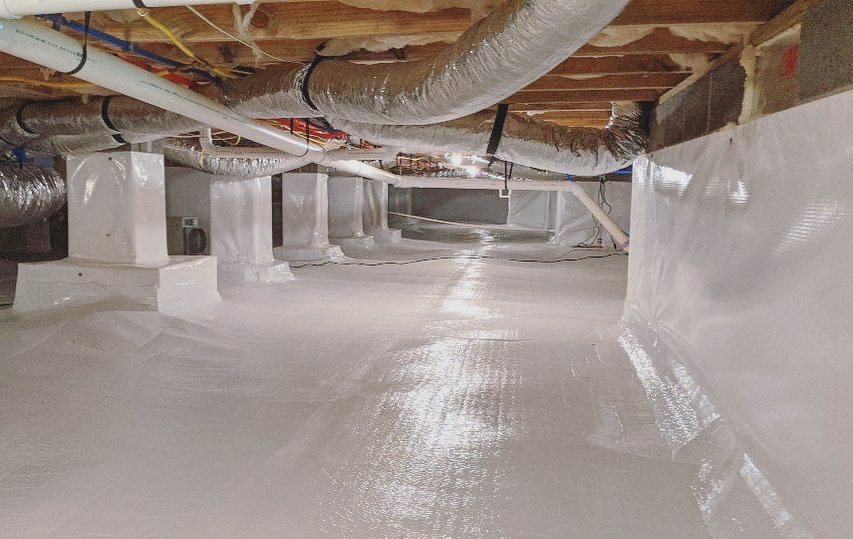
Credit: Groundworks
While most homeowners focus on basements and exterior walls, crawl spaces are equally susceptible to moisture intrusion, mold growth, and structural issues. These often-overlooked areas can be a hidden source of humidity, musty odors, and even pest infestations—especially in homes without proper foundation waterproofing.
Why Crawl Spaces Matter
Crawl spaces are typically vented and unsealed, which allows outside air and moisture to enter. Without proper insulation and vapor control, these conditions can lead to:
- Wood rot in floor joists and beams
- Increased indoor humidity levels
- Mold and mildew under living spaces
- Higher energy bills due to thermal inefficiency
This is why crawl space encapsulation is considered a vital extension of your home’s waterproof foundation strategy.
The Risks of DIY Crawl Space Encapsulation

Credit: Noosa Pest Management
Many homeowners attempt to seal crawl spaces themselves using basic plastic sheeting and DIY sealants. While the intention is good, the outcome can be risky. Here’s why:
- Improper sealing can trap moisture instead of blocking it
- Lack of professional-grade vapor barriers may lead to early material failure
- Poor ventilation planning can worsen indoor air quality
- Incomplete systems often fail to prevent mold growth
For a detailed explanation, visit our article: Why You Should Avoid DIY Crawlspace Encapsulation
Professional Crawl Space Solutions
Professional encapsulation involves sealing the entire crawl space using commercial-grade vapor barriers, insulation, and often, a sump pump or dehumidifier. At DMV Waterproofing, our process includes:
- Lining the ground and walls with a heavy-duty vapor barrier
- Sealing vents and gaps to prevent air infiltration
- Installing drainage systems for active water management
- Adding insulation and humidity control where needed
This results in a clean, dry, and energy-efficient crawl space that contributes to the overall health of your home.
Learn more about how we protect homes across the region with our full Crawl Space Repair Services.
Source Links
- Foundation Waterproofing Below-Grade Walls – Resisto
https://www.resisto.ca/en/guide/foundation-waterproofing-below-grade-walls/ - How to Waterproof House Foundations from the Outside – DryCrete
https://drycretewp.com/how-to-waterproof-house-foundations-from-the-outside/ - Basement Waterproofing Cost Guide – This Old House
https://www.thisoldhouse.com/home-finances/reviews/basement-waterproofing-cost - Below-Grade Structures and Waterproofing Systems – Sika
https://www.sika.com/en/construction/waterproofing-systems/below-grade-structures-basements.html - Transforming Foundations with Fluid-Applied Membranes – WaterproofMag
https://www.waterproofmag.com/2024/06/transforming-foundations-with-fluid-applied-membranes-for-superior-protection/ - Foundation Waterproofing Solutions – Basement Systems
https://www.basementsystems.com/basement-waterproofing/foundation-waterproofing.html - Why You Should Avoid DIY Crawlspace Encapsulation – DMV Waterproofing
https://dmvwp.com/why-you-should-avoid-diy-crawlspace-encapsulation - Professional Mold Removal and Remediation in Northern Virginia – DMV Waterproofing
https://dmvwp.com/professional-mold-removal-and-remediation-in-northern-virginia/ - How Long Can You Delay Basement Wall Crack Repair? – DMV Waterproofing
https://dmvwp.com/how-long-can-you-delay-basement-wall-crack-repair-essential-tips-for-homeowners - Top U.S. Companies for Crawl Space Vapor Barrier Installation – DMV Waterproofing
https://dmvwp.com/top-u-s-companies-for-crawl-space-vapor-barrier-installation-protect-your-home-from-moisture/

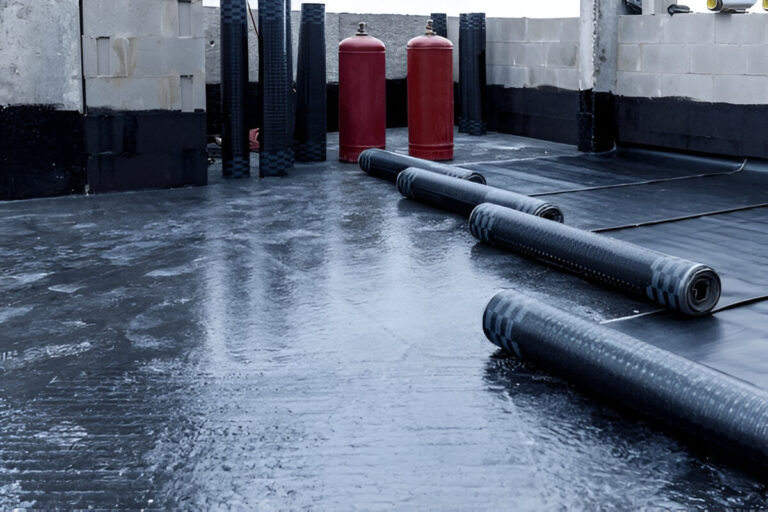

![[GetPaidStock.com]-680786795b816 [GetPaidStock.com]-680786795b816](https://dmvwp.com/wp-content/uploads/2025/04/GetPaidStock.com-680786795b816-370x418.jpg)
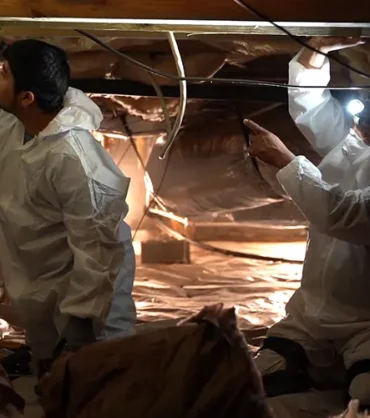
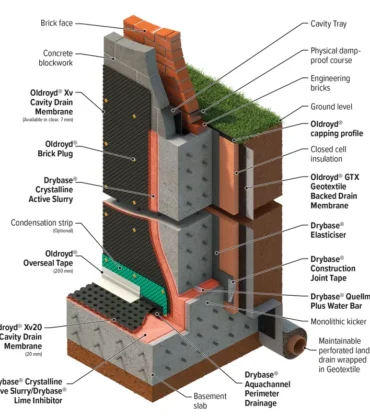
![[GetPaidStock.com]-682c413fa898e [GetPaidStock.com]-682c413fa898e](https://dmvwp.com/wp-content/uploads/2025/03/GetPaidStock.com-682c413fa898e-370x418.jpg)
